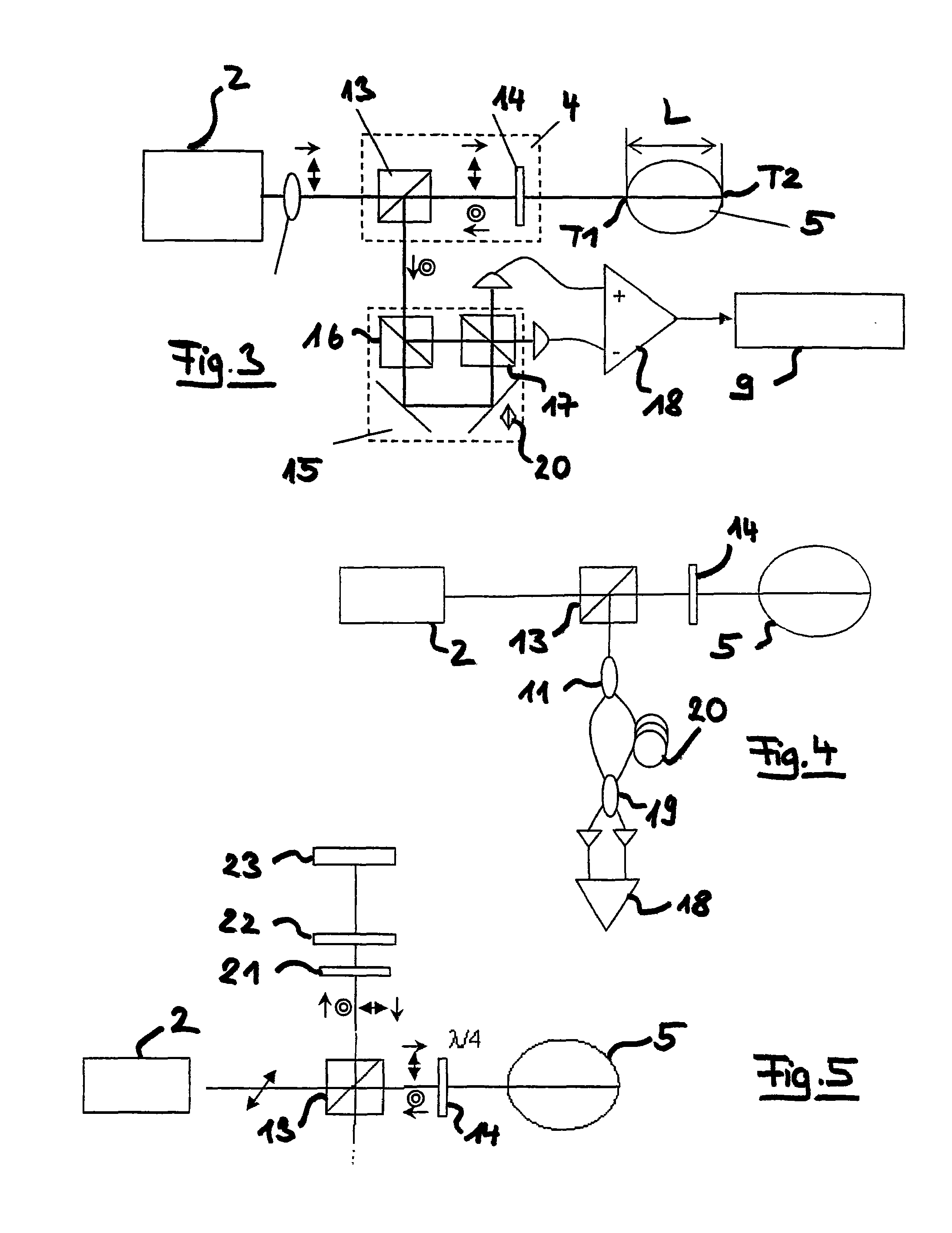Short coherence interferometry for measuring distances
a technology of coherence and distance measurement, applied in the field of short coherence interferometry, can solve the problems of reduced sensitivity, increased measurement depth, and large cost of required structure, and achieve the effect of effective noise suppression and high yield of irradiated
- Summary
- Abstract
- Description
- Claims
- Application Information
AI Technical Summary
Benefits of technology
Problems solved by technology
Method used
Image
Examples
Embodiment Construction
[0042]FIG. 1 shows schematically an interferometer apparatus 1 in the form of an eye-length measuring device, wherein this realization relates merely to an exemplary field of application of the interferometer apparatus 1, to which extent it is not be understood as limitative.
[0043]In apparatus 1, radiation of a radiation source 2 is conducted as measurement radiation 3 into a measurement beam path where it is directed onto the measurement object, here formed by an eye 5, i.e. the sample. The sample has axially spaced regions, here represented schematically as regions T1 and T2 of the eye 5, for example the front surface of the cornea, the rear surface of the cornea, the front surface of the lens, the rear surface of the lens or the fundus. Starting from the vertex of the front surface of the cornea as region T1 and the fundus as region T2, the axial distance between these regions gives the optical eye length L. The illumination of the areas T1 and T2 can also be influenced with sing...
PUM
 Login to View More
Login to View More Abstract
Description
Claims
Application Information
 Login to View More
Login to View More - R&D
- Intellectual Property
- Life Sciences
- Materials
- Tech Scout
- Unparalleled Data Quality
- Higher Quality Content
- 60% Fewer Hallucinations
Browse by: Latest US Patents, China's latest patents, Technical Efficacy Thesaurus, Application Domain, Technology Topic, Popular Technical Reports.
© 2025 PatSnap. All rights reserved.Legal|Privacy policy|Modern Slavery Act Transparency Statement|Sitemap|About US| Contact US: help@patsnap.com



